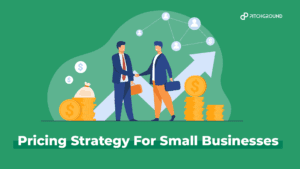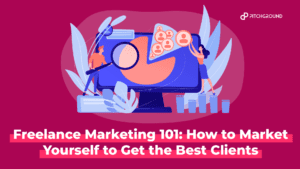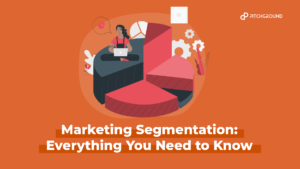Drive traffic. Generate your leads. Convert them to prospects.
Those are the primary goals of every sales funnel.
Here’s the truth:
You already have a sales funnel whether you know it or not. However, you’ll have more influence over the funnel if you’re already aware of it.
Interestingly, sales funnel is one of the basic concepts in the digital marketing industry. While it may sound odd at first, this single basic concept can virtually take a business from unknown and non-existent to a multi-million-dollar business with mass saturation within a short period.
Now, when it comes to your sales funnel, what matters most is website optimization. Each stage of the sales funnel has an impact on consumer behavior, and it’s important for you to understand them intimately.
Starting with your website lets you combine information from data to better understand your audience.
Additionally, the sales funnel theory becomes easier to master when you relate it to how people navigate your site and get to their buying decisions.
However, if you’ve never built one before – or perhaps you’ve never successfully built one – those nine little words in the first paragraph can be incredibly threatening.
Going from the top step of the funnel to the bottom is not as easy as it sounds, but the good news is that while it can be challenging to create an effective sales funnel, it’s not overly impossible.
It takes some amount of work, but anyone can do it. Yes, I mean anyone.
In this guide, you’re going to learn how to create a successful sales funnel step-by-step even if you’ve never heard the word before.
With that out of the way, let’s get started.
What is a Sales Funnel?
Before we go into the specifics of building a sales funnel, it’s crucial to understand what a sales funnel really is, the key components that guide it, and how they should work together to generate sales.
According to Ryan Deiss, co-founder of Digital Marketer, “the sales funnel as a multi-modality, multi-step process that moves random web surfers into buyers.”
To put succinctly, a sales funnel is simply a series of steps or a system designed to attract and guide customers towards a buying decision.
In a nutshell, a sales funnel might look like this:
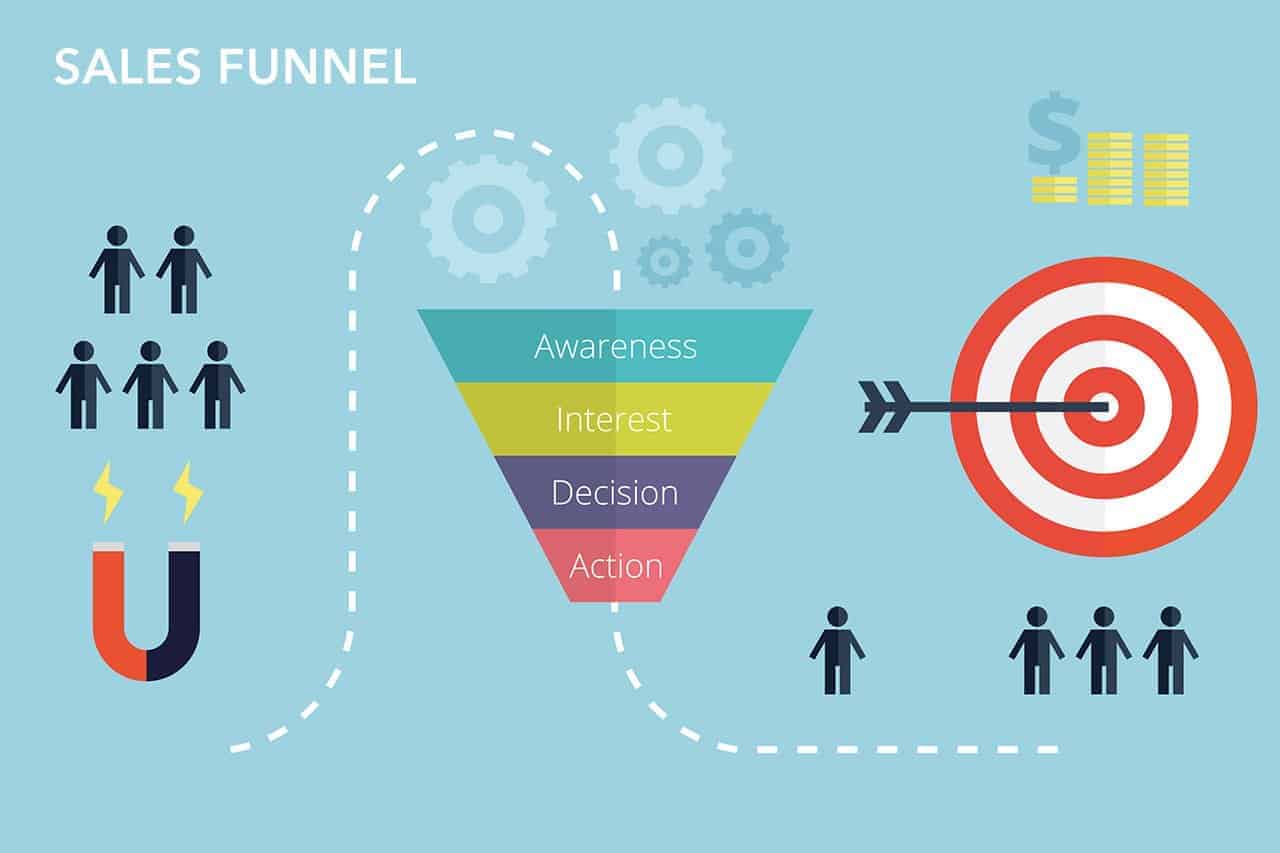
Furthermore, a good funnels can help you:
- Create awareness for your products and services
- Pick interest in what you’re offering
- Arouse a desire for purchase via a series of education
- Help leads perform your desired action
- Move leads via the entire funnel to the final purchase stage
In a successful sales funnel, this process can be repeated over and over again, and it often results in the highest number of conversions possible, although sometimes not 100%.
Now, if you’re wondering why the image above comes in the shape of a funnel, it’s simply because some visitors usually “drop out” at every stage of the funnel.
For instance, imagine you operate an e-commerce store that sells hair loss related products such as hair loss shampoo.
Because a lot of people are always experiencing some level of hair loss, they turn to Google in search of an effective hair loss shampoo.
Because you are ranking on Google for the keyword “best hair loss shampoo,” (which gets 3700 monthly searches) as you can see on the screenshot below:

Out of those 3700 visitors, 1500 of them click through to your website. And on your site, you offer a 40% discount in exchange for their email address.
500 people grab your offer.
Because of one thing or the other, only 100 people out of the 500 use the coupon and buy a hair loss shampoo from your store. Now, since people drop off at every stage of the funnel, the top part (Awareness) is often larger than the bottom part (Action). You can see the numbers go down from 3700 -> 1500 -> 500 -> 100, which consequently leads to a funnel shape.
Sounds simple right?
Sales funnels often seem difficult to newbies because they usually tend to jump in at the deepest end. They see a sales funnel diagram with a bunch of arrows and conditions and they get confused while trying to figure it all out.
Here’s an example:
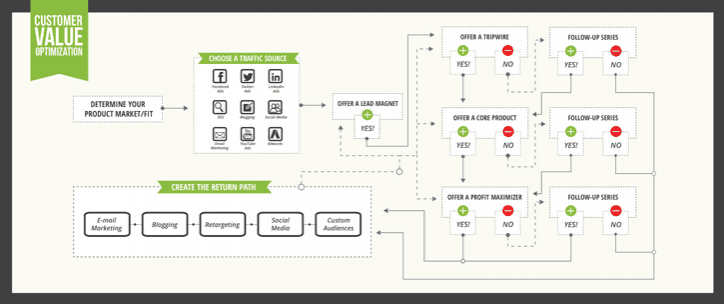
Apparently, this is way too challenging for sales funnel newbies.
Well, this article aims at making the entire process and steps very easy and effortless for you to understand.
Now, let’s find out why you need a sales funnel in the first place.
Why do you need a Sales Funnel?
As I said earlier, your sales funnel demonstrates the path your visitors will take making a purchase decision.
Having a good understanding of your funnel can equally help you spot the holes in the funnel, the stages where visitors drop out without converting or taking your desired action.
Unfortunately, if you can’t properly optimize your funnel if you don’t understand it in the first place. We’ll cover the specifics of how the sales funnel works shortly, but for now, know that you have the power to influence how visitors move through the sales funnel and whether or not they finally convert.
That’s called marketing, in the short term – but it’s very specific, highly targeted – and specifically designed for your target customer.
Every stage of the sales funnel consists of different tactics, and here’s a simple breakdown of how it works.
How it a Typical Sales Funnel Works
Here’s a clear illustration of how the sales funnel works:
Stage 1: Top of the funnel
This is the stage where potential customers are getting to know about your existence. It’s like the introductory stage.
In other words, this is where people who have a specific problem get to learn about your brand, products, or services because you’re somewhat related to the problem.
This can happen because in so many ways such as:
- They stumbled on your ads on social media (Facebook, Twitter, Instagram, etc.)
- They found your website on Google while looking for a solution to their problem
- They came across one of your videos on YouTube
- They listen to a podcast where the host mentioned you
- A friend told them about you (word of mouth)
Whichever way, they now know about you. In fact, some of them may end up becoming a customer right away if the problem frustrates them enough.
When it comes to the “top of the funnel”, your primary goal is to create brand awareness and not to make a sale.
The keywords that governs this stage are:
- Exposure
- Influence
- Engagement
Even at top of the funnel, here’s a breakdown of where potential customers might be:
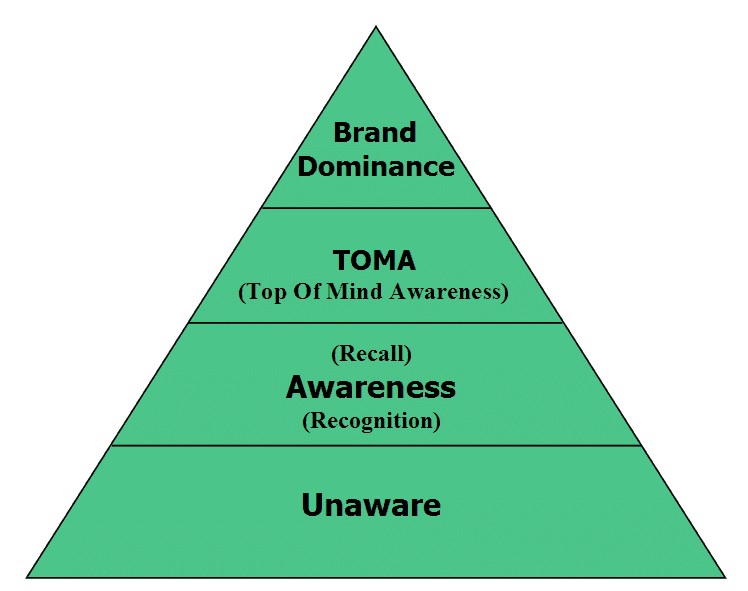
As you can see from the image, they may be completely unaware of your brand or business, or they already know about you, but have never visited your website.
Or maybe have been to your website, but have never thought of buying any of your products.
Here’s the point:
Each section of the brand awareness pyramid will need different strategies of marketing to convince the visitor to take your next desirable action.
But the primary goal of the “top of the funnel” is to get them to know of your existence, and that you have something that could solve their problem.
Stage 2: Middle of the funnel
Once you’ve created some awareness about your business, there has to be some amount of interest.
You need to convert those casual “visitors” into “leads,” which is the step that comes before “customer.” At this stage, visitors are “hooked.” They’ve already consumed your content, and now they want to know more.
They want to go deeper into the subject and figure out whether you have something of value to offer them or not.
In simple terms, they’re contemplating whether they should engage with you or just walk away. Additionally, this is equally the point where you’re gathering more information about them.
- Free eBooks
- Email courses
- Case studies
- Free software trials
And anything else that will serve as an incentive to lure them into giving you their email address will be highly beneficial to your sales funnel.
Furthermore, when leads arrive at the middle of your sales funnel, targeting and segmenting also become very crucial.
At this stage, you need to concentrate your effort on targeted offers, content creation, and informative follow-up campaigns for specific buyer personas as also shown on the funnel diagram below:
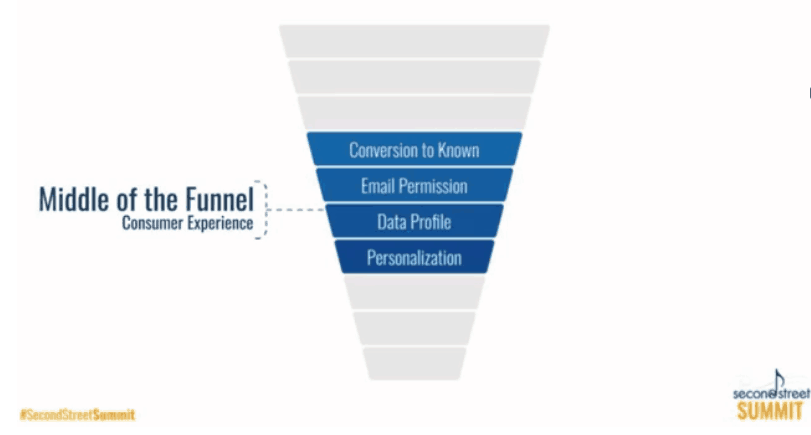
The majority of your work might be done on this stage. But if you do it properly, it’ll be the most rewarding of all.
Here, your ultimate goal should be to strengthen the relationship between you and your prospects so that they can willingly move on to the next stage (the final stage).
Stage 3: Bottom of the funnel
And we’re finally at the final decision-making stage of the sales funnel, also known as the consideration stage.
It’s equally a combination of hard and soft selling, depending on the tactics you used at the top and the middle of the funnel together with the consumers’ buying behavior:
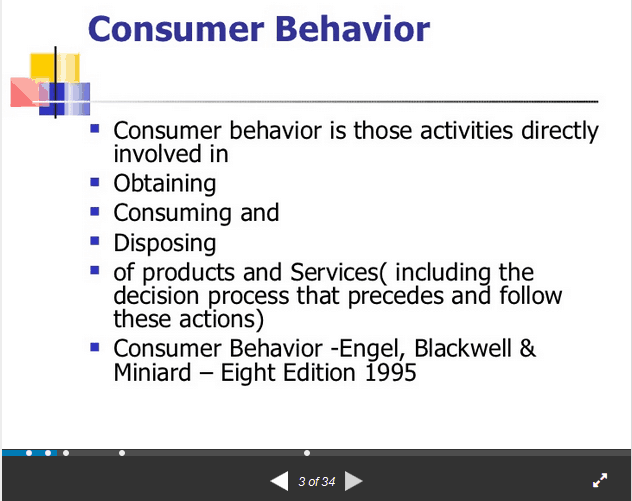
At this point, your prospects understand the problem – they know about the solution – and they also know you have the solution to their problem.
But there is one problem.
Just because they know you and that you have answers to their problem doesn’t mean they will go with you. Chances are, there are a bunch of other possible solutions for them to go for.
They will check out the alternatives to see if you’re truly the best choice.
In this case, they will be carrying out a research about the benefits of your product/services, whether it will meet their needs or not as well as how easy it is to buy the product from you.
This can literally be an emotional stage for the buyer, so it’s essential that your sales strategies and messages are also emotional and well targeted to specific needs.
Motivational offers, reminders, and retargeting, work very well here (we’ll get to that shortly).
Your job here is to convince and make them understand that you’re the right person, company, or product for the job.
Finally, a healthy sales funnel will easily take a visitor from the top to the bottom. But to achieve that, you need a good working strategy, and what’s what we’re going to be discussing next.
How to Create a Sales Funnel Step-by-Step
Having discussed what a sales funnel is and how it works, below is a step-by-step guide to creating the perfect sales funnel for your business in 2019.
Step 1: Build Lead-Generating Landing Pages
If you are building a sales funnel from the ground up, then the first place to start is the top of your funnel as we mentioned earlier.
Apparently, the “top of the funnel” consists of traffic generation. But to transform that traffic into something meaningful in the end, you need to create a lead capturing landing page.
A lead capturing landing page could be your just homepage as seen on the IM Views blog:

Although this is a homepage, it has a lead capturing element on it that is perfectly designed to gather emails.
Importantly, it should be a high converting landing page other than a purely informational page.
Another example of a good lead capturing landing page might look like this one:

Notice that the examples above have plenty of lead capturing elements such as a call-to-action (CTA) button, a social proof, and a list of features.
You can build landing pages for your visitors at any stage of the sales funnel.
For example, a homepage might hit people right at the top of the funnel. Perhaps they already know who you are, and perhaps they don’t.
Regardless, the goal of your landing page should be to give more information to the curious viewer.
On the other hand, a landing page like that of Smart Passive Income above might take someone to the middle of the funnel. They probably want to know more about the product’s specifications, for instance.
Take a look at this homepage from HubSpot:

The main text was designed to capture leads at the top of the funnel, and on the navigation, they give access to pages that would mostly benefit people in the middle of the funnel who are somewhat interested in buying.
On the other hand, if you take a look at their pricing page, you will discover that they’ve channeled it toward visitors at the middle or bottom of the sales funnel:

Now, the next action step here is obviously more sales-oriented than just getting to know the product.
A highly converting landing page is simply the secret to a successful sales funnel, which is why it’s the first thing you should consider building.
That said, you will most likely need different landing pages that appeal to buyers from every stage of the cycle.
But once you’re done creating up your landing page, you can now move on to the next step of the process.
Step 2: Drive traffic to your landing pages
Sadly, creating a landing page alone won’t do the magic with a good source of traffic.
This is because a great landing page without any form of traffic won’t make any difference in your sales.
However, according to HubSpot, “traffic growth is one of the major challenges inbound marketers faced in 2018” as you can see below:

This means that if your landing page must be seeing and generate leads and sales, you need to create a proven way to drive traffic to it so as to move a potential customer/client to the next stage of the sales funnel.
So what’s the perfect way of driving traffic to your landing page?
Well, it totally depends on your budget, goals, and audience.
That said, here are a few traffic generation methods to consider:
a. The Search Engines
Where do you often go to look for your answer to your questions?
Most likely Google.
Your prospects are the same. If they have any problem, they’ll carry out a Google search on it. If they have a question, they’ll also Google it.
Don’t take my words for it:
According to Business Insider, “Google processes about 3.5 billion searches per day, dominating more than 90% of the overall search engine market.”
So how do you leverage the search engines to drive traffic to your landing page?
Start by publishing good content on your website. I’m talking about the type of content that’ll rank well in Google so when people search for relevant terms, they’ll find your content and read it.
How can you achieve this?
Perform keyword research.
There are several tools out there you can use to find relevant topics that your target customers are searching for in Google.
Tools like Ahref, Ubersuggest, keywordtool.io, kwfinder, and even the free Google keyword planner.
Simply visit any of these tools and enter keywords related to your industry to uncover more relevant keywords you can target your content.
Using the “hair loss shampoo” as an example, when I entered it into the Ubersuggest keyword tool, here’s what I found:

You can see that the keyword has a monthly search volume of 18,100 and when I scrolled up the page, I can see even more keywords I can target:

If I click on the “view all keyword ideas” button, I’ll be able to see a lot more keywords that are related to my seed keyword (hair loss shampoo), which I can also target in my content.
I have to ensure that each content you’re creating has search traffic potential. If you’re not so good with SEO yet, then you can check out this guide to learn more about the subject as it’ll be critical to the growth of your business in the long run.
That’s basically the process I follow while writing search-friendly content to promote anything, including my landing pages.
Admittedly, the process may be different for you. But you will still need to always perform keyword research.
Even if you cannot afford to buy a paid keyword research tool at the moment, there lots of free keyword research tools out that you can use to kickstart your SEO process.
b. Social media
Another great way to drive to your landing page at the beginning and middle of your sales funnel is via social media outreach.
Social media is undoubtedly an excellent tool with lots of audiences as you can see on this chart from Our Social Times:
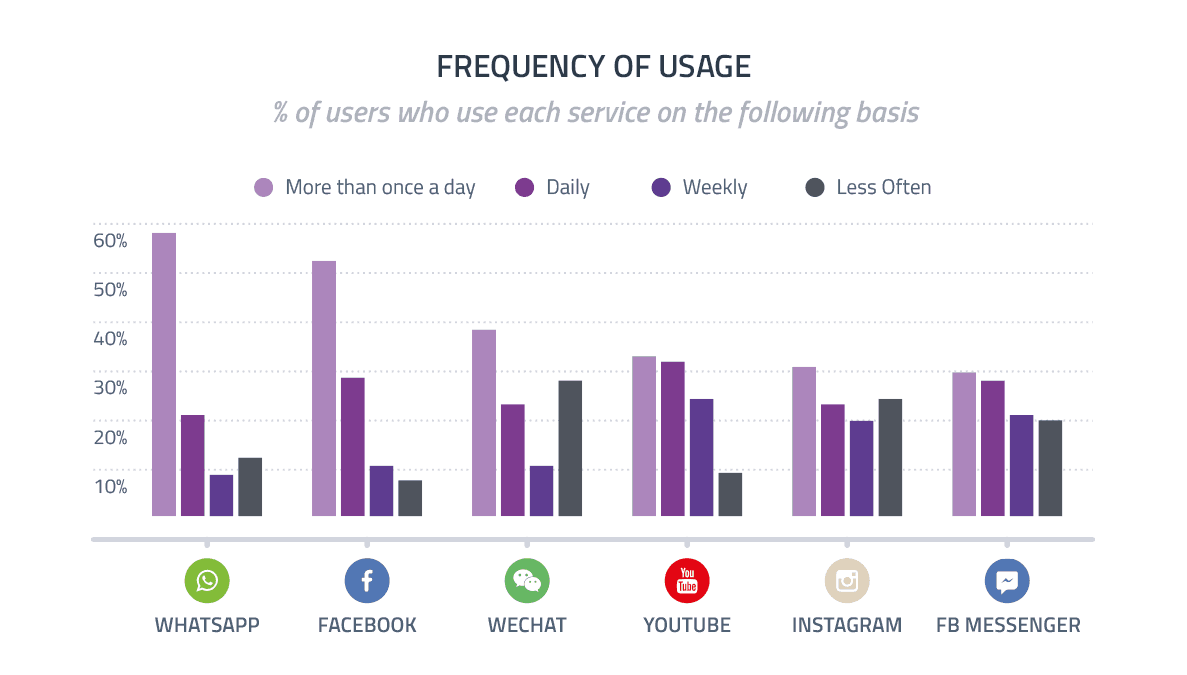
It’s equally a wonderful traffic generating tool due to its influential nature, you simply have to tap into it and get more eyes to your landing page.
A recent study by Sprout Social showed that “simply answering a customer’s question on social media stimulates about 48% of consumers to take your desired action such as making a purchase.
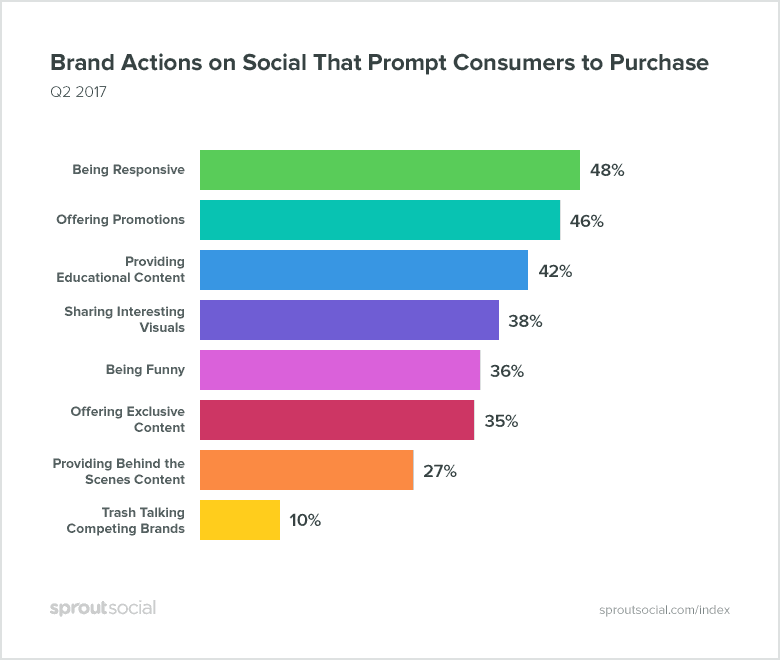
This shows that it’s somewhat easy for you to create awareness for your brand or business while also taking someone from the “awareness” stage to the “tell me more” stage.
c. Online communities
Aside from searching on Google for answers, consumers might, sometimes, need a personalized answer to their questions, and that is where online communities come in.
Online communities (Quora, Reddit, Yahoo answers, Facebook groups, etc.) are great platforms where people with a common interest meet to share ideas, tips, pieces of advice, and opinions on a particular subject matter – and there is always an active community for every topic you can think about.
That said, online communities are a fantastic place to be if you want to easily and effortlessly reach your target audience. Some of these platforms get millions of visitors per month, which you can channel to your site for more exposure.
For instance, Reddit gets a whopping 14 billion page views per month as you can see below:

Here are a few principles to follow if you want to succeed with online communities:
- Read the rules guiding the communities. Each community has a rule guiding it. Now, before using any community, you want to find out and observe their rules. Breaking the rules will certainly get you kicked out or even banned.
- Add value to the community. No community accommodates a member that always pitching and hard selling without bringing any value to the table.
- Be an active contributor. People will always trust and follow you based on what you’re saying in the communities. Once you’ve proven that you’re knowledgeable in your field, people will start flocking around you.
- Don’t be spammer. Don’t just enter a group to drop website links alone – that’ll get you kicked out faster than you can say “sales funnel.”
When you’ve proven your worth and the community is already seeing you as a valuable member of the group, you can then start promoting your products, service, or brands smartly.
d. Pay per click (PPC) ads
With 40% of agencies and brands planning to increase their PPC spending budget in 2019, it’s only an indication that PPC advertising is a popular traffic generation choice among marketers.

One of the reasons why PPC advertising has become incredibly popular over the years is because it can easily reach people on a range of networks and channels.
For example, you can run social media ads on Facebook, Twitter, Instagram, etc. Or just focus on search engine PPC ads such as Google AdWords to generate paid search traffic.
However, the bad thing is that PPC ads can be quite expensive, and if you’re creating it on a budget, you’ll have to consider the cost vs. return on investment (ROI).
It’s important to make sure that the amount of money and effort you put into the ads will be able to generate enough traffic to move a good number of leads through to the middle of your sales funnel.
Check out this article from Wordstream to learn the basics of PPC advertising.
e. Leverage other people’s audiences
In every industry, you’ll always find those people that have successfully built a large audience of loyal readers, viewers, and listeners.
In this step, you’ll want to find those successful people in your industry (also known as influencers) and leverage their audience.
By connecting with these influencers, your brand, product or message can easily gain more exposure and get noticed by an entirely new group of people.
See it this way, these influencers have built an engaging audience from valuable content – and we all know how difficult it is to be continuously creating valuable content.
Interestingly, if you can convince these influencers that you can write great content for them, they will be very excited to introduce you to their audience.
This is a strategy lots of people have used to build up their brand audience to an enviable height.
That said, apart writing content for them in the form of a guest post, there are many other ways you can use influencers audience to your advantage.
You can start by appearing on their podcasts, present at a conference, appear on a webinar, or be a guest on an email newsletter.
How you wish to leverage influencers’ audience is entirely up to you.
Either way, start by creating a list of influencers you wish to connect with and finding their email addresses.
After that, the next step will be to send them a personalized outreach email to determine if they would agree to work with you. Show them you truly know your onion and your chances of success will be massive.
f. Content marketing
There are many other effective ways to drive traffic to your website, and one of such ways is via content marketing.
Interestingly, content marketing is as effective, if not more effective, at generating traffic as online communities and some of the other platforms we’ve mentioned here.
According to Impactbnd, “66% of marketers confirmed that they’re using blogs and other forms of web content as their primary social media content.”
While content marketing can hit visitors at any stage of the funnel, it’s the ideal tool for influencing the middle of the funnel specifically as it’ll help you to meet the research and education needed for someone in the middle of the funnel to finally convert.
But for you to get that conversion, you must create content that captures information.
Step 3: Build resources to collect email addresses
After you’ve decided on how you’ll drive traffic to your landing page, the next step is to develop content that aims at capturing attention.
Apparently, it takes a whole lots of effort to take a visitor from the top of the sales funnel to the middle and from the middle to the bottom.
For you to achieve this, you have to keep on targeting them with the type of content they are looking for.
If they desire to get more information about the benefits of your product, then you should send them to resources that will properly explain why your solution is the best solution for their problem.
This type of resources (also called lead magnets) does two things:
- It gives the consumer something more valuable
- And it gives you an email address, which you can use for further marketing and follow-up
People can always easily download a free e-book or a checklist if it’s really valuable and of higher quality. And if you can get their email, you can send them more targeted information that might sway them to buy what you’re offering.
So what’s the process of creating a lead magnet that can move someone through the sales funnel?
1. Create different types of lead magnet
First of all, lead magnets should be something your target audience will find very useful. They must have a tangible reason to give you their email address.
Here’s a good example of a simple lead magnet:

You can equally offer them something like a free trial or sign-up:

Both of these lead magnets work very well, depending on your audience. The first example will get you their email address, while the other one will create an account, which can also be considered a mini-sale.
2. Make it easy for your lead magnet to be noticed
Your lead magnet should be prominently embedded into your content or on your lead-generating landing pages in a very noticeable way as you can see on the Blogging Cage homepage below:

Just ensure your lead magnet isn’t hidden someone in your website. The goal is to make it as easy as possible for your visitors to see them without wasting anytime.
If they have to spend a lot of time before they can see your lead magnet, then you’ve failed, and it’ll hardly convert.
3. Make it easy for visitors to give you their information
Getting a visitor to hand you his email address is a matter of value exchange. You’re offering him something and getting his email in exchange.
You want this process to be as easy and effortless as possible. If you give a room for them to feel tired of taking your desired action, then you won’t get their email.
For example, except they’re registering for a free trial software where they would need to provide more information about themselves, you should have just a name box, email box, and a call-to-action button. That’s all.
Even just asking for an email address alone works as seen on the Bidsketch sample client proposal opt-in box below:
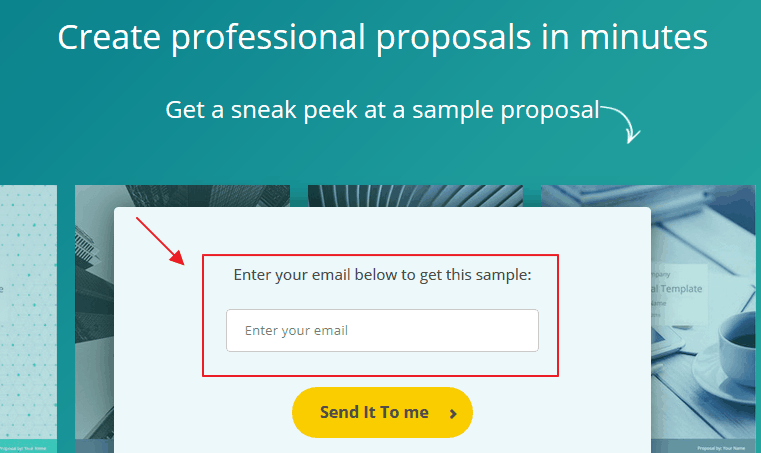
You don’t necessarily need a bunch of information about the visitor at the moment even if they’re already in the middle of the sales funnel.
If you’ve successfully gotten their email, you can then move to the real sales point, which is email campaigns.
Step 4: Create an email marketing campaign
An email marketing campaign is the next step in the sales funnel creation process as it builds a relationship with a prospective customer over time.
This gives them the free space needed for them to make a buying decision while equally keeping them highly engaged in the entire process.
According to Supper Office, 87% of B2B marketers generates leads with email marketing, and about 31% of them said that email marketing creates the biggest impact on their revenue.
Interestingly, email campaigns can fill a wide variety of purposes. According to Mail Bakery, email marketing can introduce a prospective customer to the product you’re offering:
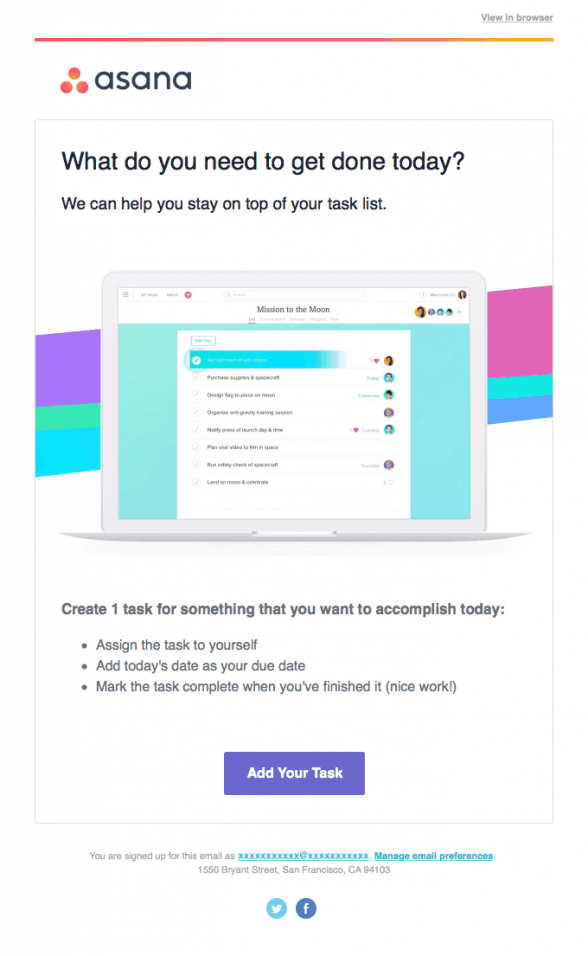
They can also showcase more about your brand, as well as recapture the attention of a customer who has purchased from you before – and also announce the launch of a new product:

The idea is to create a series of email campaigns that will keep on reminding prospects that you’re still there and that you’re ready for business.
Here’s an example if a typical email campaign:
Day 1: This is a simple “welcome” email thanking the prospect for indicating an interest in your product/service.
Day 2: An email offering him another related lead magnet, typically a freebie such as an eBook, checklist, or free trial.
Day 3: An email that contains a testimonial from a customer about your product.
Day 4: An email that contains more examples of how your product or service has helped customers be successful and how they can also benefit from your product or service.
Day 5: The last email follow-up that’s in the form of a “hard sell” or the next step in the purchase chain.
These kinds of emails are basically designed to quickly move a prospect through the remainder of the sales funnel.
Additionally, it will help to close leads that might be uncertain about why or how they should buy from you.
When you’re done engaging them with an email series, the next step will be to track your progress and make any tweaks needed to refine the process.
Step 5: Track and Modify Your Sales Funnel
Let’s quickly recap on the sales funnel creation process so far:
- Build a landing pages
- Start your traffic-generation campaign
- Create a lead magnets
- Create an email marketing campaign
You should start seeing some leads and sales once you’ve created a solid email marketing campaign.
But it’s also important to track each step of the process to ensure there are nothing left out in your sales funnel, especially in the middle of the funnel.
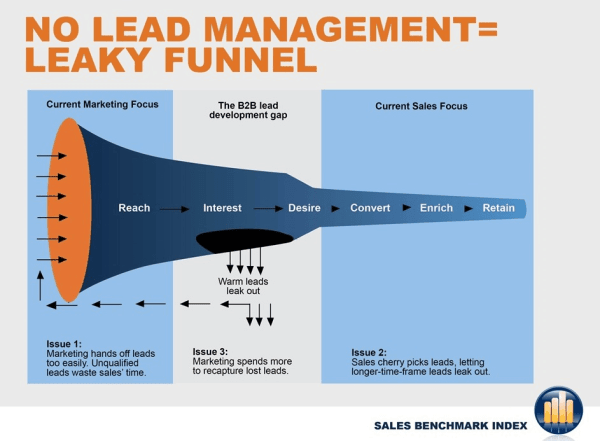
If your website isn’t generating traffic – or that traffic isn’t converting into email addresses – or your sales numbers aren’t increasing, then something is definitely wrong somewhere.
In other words, monitoring your metrics, analytics, and sales will be critical to the process.
Good enough, there are specific tools that’ll make the process of tracking your sales funnel progress a lot easier.
Think of using tools like:
- Email tracking tool: If you’re using an email marketing tool such as Convertkit or Drip, then you can track your leads from your desktop or simply integrate it with your CRM
- A CRM: A good CRM will let you track all your new leads, open deals, as well as see current customers
- Social media marketing tools: Tools such as Hootsuite or Buffer can also help you monitor your social media lead-capturing progress
For example, Hootsuite Insights combines your analytics data with more advanced social media monitoring to enable you see which content or ads are performing well and what’s flopping. And tools like Google Analytics equally works well.
Remember, none of these tools matter as much as the fact that you’re constantly monitoring your sales funnel for leaks.
This will allow you to see where you can make adjustments that might tremendously boost the quality of your leads and conversions.
2 Sales Funnel Solutions You Should Check Out
Now that you already know everything you need to know about sales funnel, it’s also to list good examples of sales funnel apps that’ll make the process of creating sales funnels easy for you.
Here are the 2 sales funnel apps you can check out today:
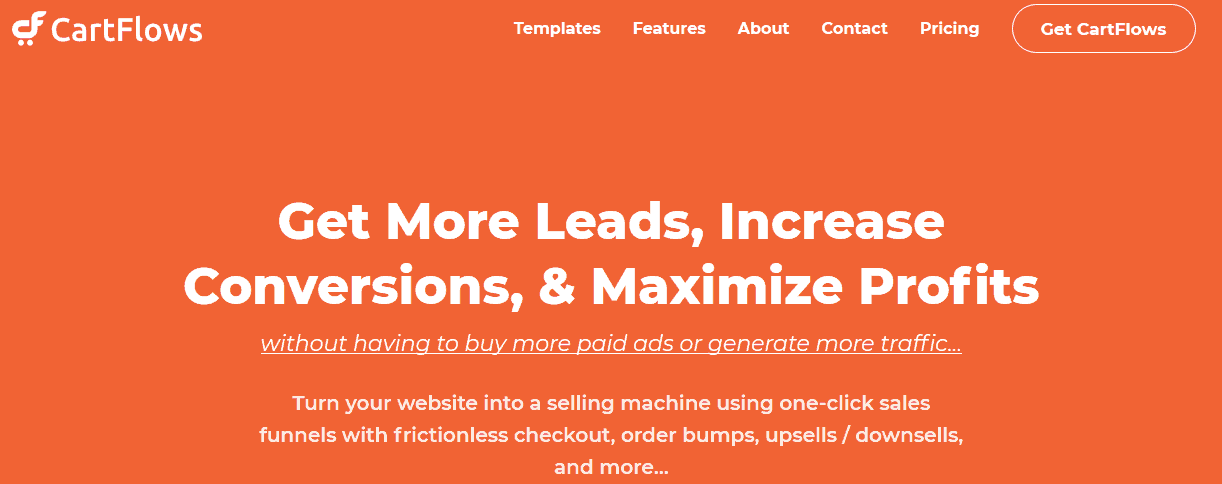
CartFlows is a simple WordPress plugin that is designed for building sales funnels on WordPress websites. With CartFlows, you have total control over the entire sales process, from the initial landing page to the upsells, cross-sales, and all the bump offers you might introduce along the way.
One of the various benefits of using CartFlows is due to the fact that it leverages the power of page builders like Thrive Architect so you can seamlessly create a stunning looking sales funnel.
Especially judging by the fact that most other SaaS-based funnel builders like ClickFunnels or Kartra have horrible page builders that are pretty much exhausting to use.
Interestingly, CartFlows is the best tool to implement complex sales funnels into your WooCommerce powered WordPress websites.
With CartFlows, you will get:
- Ready to Import Templates
- Conversion Tested Checkout
- One Click Order Bumps
- Unlimited Upsells and Downsells
- Training For Everything
- A/B Split Testing
- Cart Abandonment
- Analytics and Tracking
Aside from all these features, below are some of the other exciting functionalities that come with CartFlows:
- CartFlows gets your users a fantastic deal while they’re in the buying mood
It’s a normal thing to see some discounts on products via a sales funnel experience as it’s one of the various psychological triggers that often help people make the final buying decision.
With the value you can provide in the sales process, you can solve your customer’s current problem as well as their next problems.
For instance, if you’re selling a video course on “How to build a blog,” you might as well offer a “How to drive traffic to your blog” course at a discounted price, knowing fully well that it’s the next challenge your customer will face once they’ve created their blog!
- CartFlows will help you create a good user experience for your users
Sales aren’t supposed to be a win-lose situation. Good selling is all about win-win, by putting the right products before your visitors, and doing so in an effortless and helpful experience, that’s precisely one of the things CartFlows will achieve for you.
- It allows you to iterate and improve over time using conversion rate optimization (CRO)
Let me start this with a few questions:
- What’s usually the cost of acquiring a new customer?
- What percent of new visitors turns to customers on their very first visit?
- What is the average order value of new customers versus returning customers?
If you can really take some time to meditate on these questions, then you’ll understand where I’m coming from.
These are important numbers for sellers and business owners, but it’s often very daunting to accurately measure them using traditional e-commerce methods.
However, once you’ve mapped out and tracked your entire sales process, you can easily measure your key performance indicators (KPIs) with pinpoint accuracy:
Interestingly, you can easily see the performance of your funnel from the CartFlows dashboard:
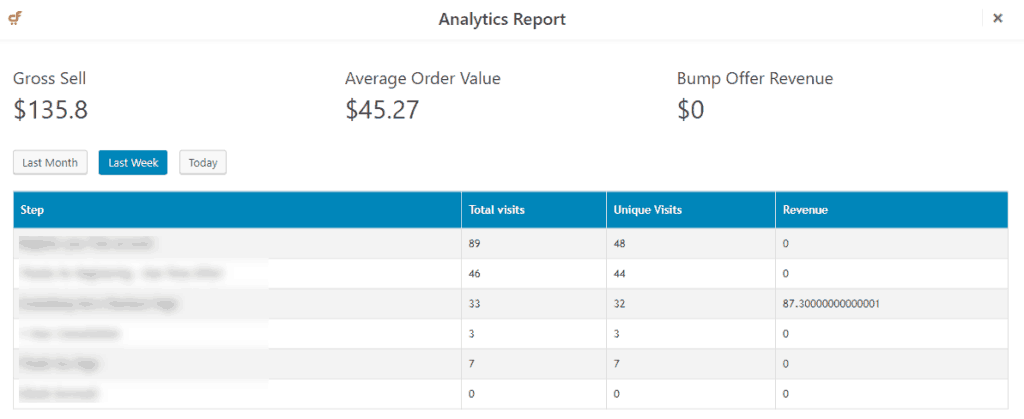
Here, you’ll be able to see how many visitors made it through each step of the sales funnel (conversion rate), together with how much money you make at every step of the process.
- CartFlows will help to boost your average order value
Ideally, when people are browsing an e-commerce website, they usually buy what they came for and check out. However, with CartFlows and great sales funnels, the product price is just the beginning.
Include upsells, downsells, cross-sales, and a few psychological triggers – and the final purchase price will skyrocket.
Even if you have lots of items in your store, creating a global funnel or a specific funnel for your top 10 performing products can have a significant impact on your bottom line.
- CartFlows allows you to create an “evergreen” sales process that eliminates the stress in big launches
Big launches are usually the most stressful things for marketers as it’s one of the few times of the year when they make most of their money.
That’s where the effective sales funnel comes in! It reduces stress by building evergreen launches.
In other words, instead of launching a product every few months, you can launch forever. Just get new visitors and offer all the scarcities and incentives of a real launch without extra stress and headache.
Thrive Ultimatum is one of the tools that have specialized in this, but CartFlows is natively building the feature into their platform!
- It allows you to focus more on higher value activities
Without an automated sales funnel, you will be compelled to pay attention to the individual pieces of tech like the email newsletters, the launches, and of cause, the stress.
But when you’re able to split-test and optimize an effective and evergreen sales funnel, it’ll enable you to focus on the crucial things such as creating more products, spending more time with your customers, and helping more people solve their problem.
#2. Market Plan
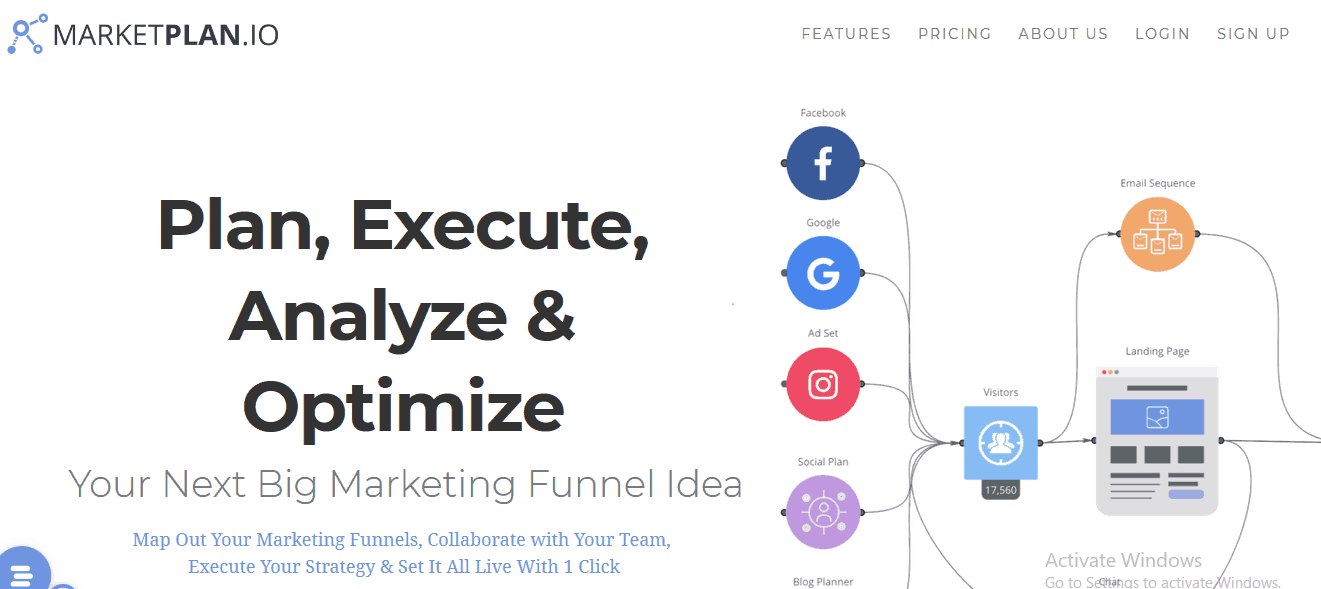
To put succinctly, Market Plan is an all-in-one tool that’s designed to map, plan and track all your marketing efforts. The most exciting part is the team collaboration feature for inclusive planning.
Furthermore, Market Plan is the only software that lets you:
- Map out a marketing funnel
- Assign tasks and smartly collaborate with your team
- Ensure coherence with your brand and marketing message across all channels
- Interact with your team in real time
- Correctly price your offers for maximum revenue potential
- Run realistic projections
- Set real time live changes
- Launch your funnel and watch your plans in action with a single click
The inbuilt templates that come with Market Plan are a great starting point for your funnels – and if you operate a marketing agency, it’s an important tool to impress your customers/clients and visually present your marketing plans.
It’s really awesome to track your paid advertising and content marketing in one place as it gives a fair reflection of your return on investments (ROI).
Essentially, if you’ve been wasting lots of time making lengthy presentations for your marketing campaigns but still can’t get it across to your team early enough, then you need a PLAN that everybody can access, edit, and stay accountable to. Now, MarketPlan.io is one place where you can take the fantastic ideas in your head and set them into action.
In simple terms, MarketPlan.io gives you the power to plan –> execute –> analyze –> and optimize your next marketing idea seamlessly.
That said, here are some of the functionalities that MarketPlan.io boasts of:
- Real-Time Mapping
- 10+ Marketing Mini-Apps
- Marketing Congruence
- Real-Time Collaboration
- Funnel Projections
- Funnel Masterminding
- Project Management
- Funnel Plan Templates
- Real-Time Metrics
Now, if you’ve been looking for an all in one, simple to use sales funnel builder, I’ll suggest you give Market Plan a shot today and see what it feels like.
Conclusion
Creating a highly effective sales funnel takes time and efforts. It’s certainly not easy to work – but it’s your only chance of surviving in a competitive industry.
Interestingly, even details as small as font and color choice can affect conversions. And if you persuade your visitors to buy from you too quickly, you will end up scaring them away.
Therefore, you want to take time and create a sales funnel that perfectly represents what you want as well as your audience needs. Cultivate it over time, tweak your strategy to different sales funnel stages, and find out exactly what’s working for you and what’s a total waste of your time.
Just make sure to monitor your metrics and pay attention.

